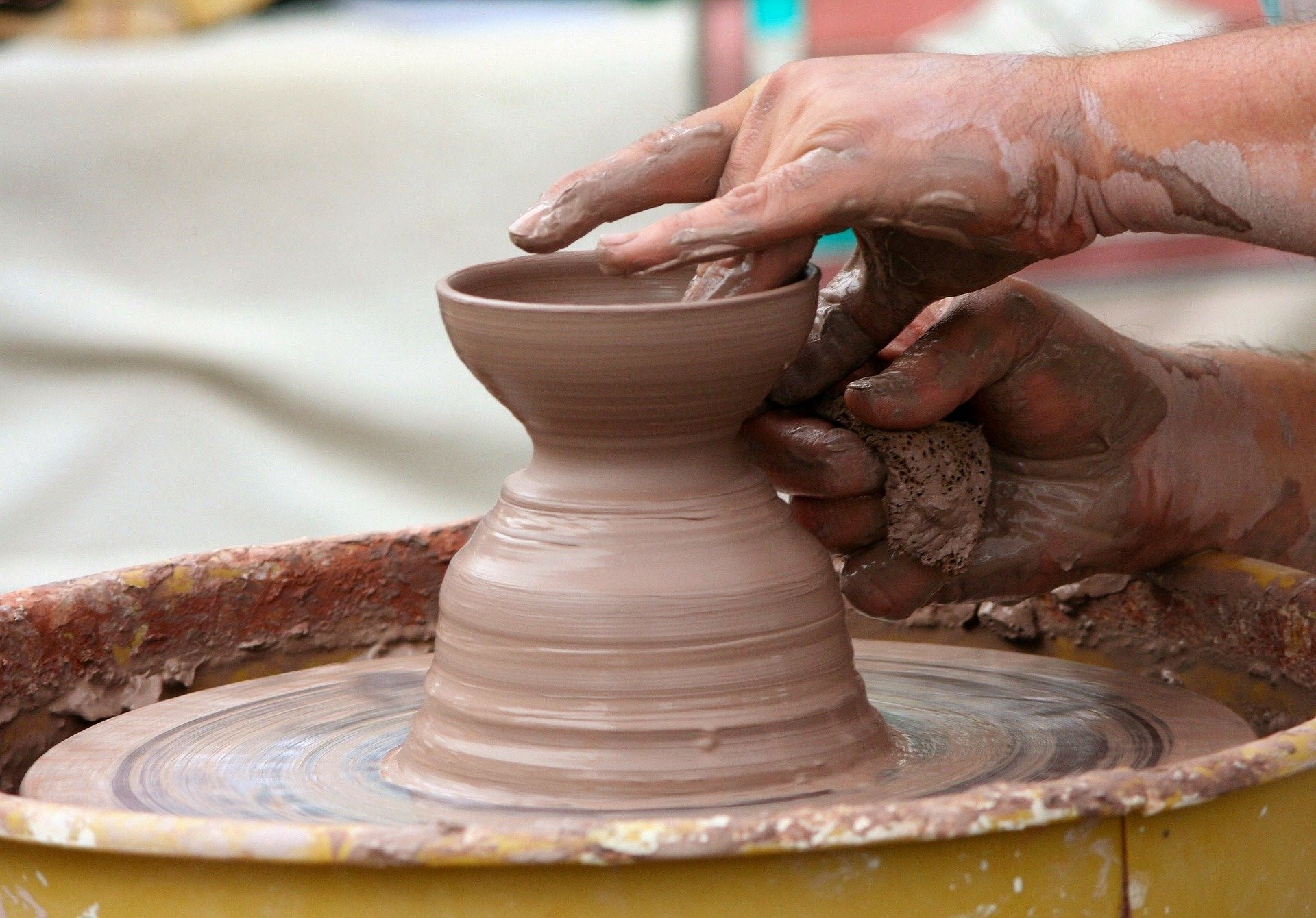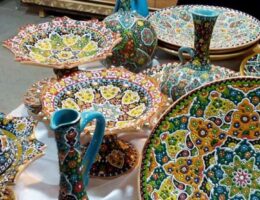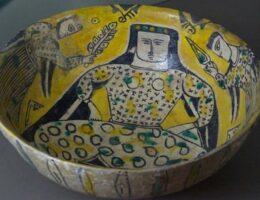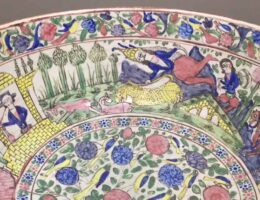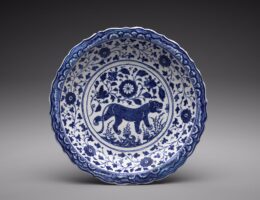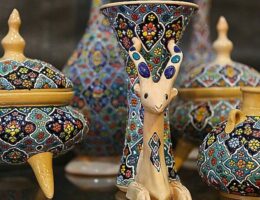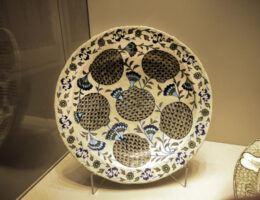IRAN ART EXHIBITION: CERAMIC POTTERY WORKS BRINGS CALMNESS TO YOUR HOME
Intro to Ceramics: Understanding the Types & How to Learn
Traditional ceramics are ubiquitous to our everyday life and overall development as humankind. Archeologists trace ceramic origins back thousands of years, from marking history with artistic figurines to more practical uses like storing grains in ceramic vessels. Here, we will walk you through the history of ceramics, its practical uses, different types, and how to learn ceramics.
What is ceramics, anyway?
Ceramic objects are made by combining naturally occurring raw materials, such as clay, earthen minerals, and water, and shaping them into forms using handbuilding, wheel-throwing, or mold casting techniques. Once shaped, the object is fired in a kiln at a high temperature. Firing ceramics make them hardened and heat resistant. Ceramic objects are used as building materials, functional dinnerware, decorative sculpture, and more.
“Ceramic” can be used as an adjective, or as a noun to describe the clay object once it has been fired. There are a number of techniques used in ceramics, depending on the final project you have in mind. Ceramic objects can be built by hand using slab, coiling, and pinching techniques. Potters also use wheel throwing to create symmetrical pottery and slip casting to create multiples of one object.
Traditional types of ceramic pottery
Common examples are earthenware, stoneware, porcelain, and bone china. Clay is one of the widely available raw materials for creating ceramic objects. Different types of clay and combinations of clay with different variations of silica and other minerals result in different types of ceramic pottery.
Earthenware
Earthenware is pottery that has not been fired to vitrification, which is the process of crystalline silicate compounds bonding into noncrystalline glass compounds. This makes the pottery more porous and coarser to the touch. Earthenware pottery was the most common type of ceramics until the 18th century. Terracotta, a clay-based and unglazed ceramic, is a common type of earthenware. Today, we commonly see planters made from terracotta, along with bricks, water pipes, and more.
Stoneware
Stoneware is a vitreous or semi-vitreous ceramic, meaning it is coated in enamel to make it appear glassy and to make it nonporous. Stoneware is fired at high temperatures compared to other ceramics. It is typically an earth tone color because of impurities in the clay and is normally glazed.
Porcelain
Porcelain ceramics are made by heating materials, generally kaolin clay, in a kiln to temperatures between 2,200 and 2,600 degrees Fahrenheit. Porcelain is a very heat-resistant and strong material compared to other types of ceramics. This is because of the vitrification process and formation of the silicate mineral mullite when fired. Common types of porcelain ceramics are bathroom and kitchen tiles, vessels, decorative sculptures, and more.
Bone china
Bone china, also known as fine china, is a type of porcelain that is known for its translucency, high strength, and chip resistance. It is made from a combination of bone ash, feldspathic material, and kaolin, and was developed by English ceramicist Josiah Spode around 1800. Because it is such a strong material, bone china ceramics can be shaped into thinner forms than porcelain. It is vitrified but is translucent due to differing mineral properties.
Ceramics throughout history
The oldest known ceramics
The oldest ceramics that have been found date back to at least 25,000 BC. Uncovered in Czechoslovakia by archaeologists, these ceramics were in the form of animal and human figurines. They were made from a mixture of animal fat, bone, bone ash, and clay and were fired in ground kilns at low temperatures around 1000 degrees Fahrenheit, or simply dried in the sun to harden.
First functional ceramic vessels
IRAN ART EXHIBITION: The first examples of functional ceramics vessels are believed to be from about 9,000 BC and were likely used to store food, grains, and water. This was also around the time that small farming communities became more common in Asia, the Middle East, and Europe.
Decorative glazes and surface design
Early ceramics were generally simple in design and texture and were fired without glazes. In the 6th and 5th centuries BC, Greek Attic vases showed the first known use of oxidizing and reducing atmosphere during firing to achieve surface patterns and varying colors.
The invention of the wheel
One of the first breakthroughs in the fabrication of ceramics was the invention of the wheel in 3,500 BC. It allowed potters to go beyond the restrictions of hand building, and to dive into creating pieces with radial symmetry.
The introduction of porcelain
Around 600 CE, Chinese potters introduced high-temperature kilns and developed porcelain from kaolin clay, which is also known as China clay. This opened up possibilities for less porous and much stronger ceramic vessels. Throughout the 16th century, low fire earthenware remained the most common type of ceramic in Europe and the Middle East. It was not until the Middle Ages that trade through the Silk Road allowed for the introduction of porcelain and high-temperature kilns throughout Islamic countries and Europe.
Modern-day ceramics
Over the course of thousands of years, the ceramic industry has undergone a huge transformation. After World War II, ceramics contributed to the expansion of technology, electronics, medical equipment, transportation, and more. Today, you can learn ceramics for artistic or practical purposes.
How to learn ceramics
The Crucible offers a unique place to learn the different ceramic and pottery building techniques of pinching, coiling, and using slabs, in addition to press molds and slip casting with plaster molds. Students have the opportunity to explore different glazing techniques in low fire, high fire, and other firing alternatives, such as raku firing. Functional tableware, vessels, sculpture, installations, and mixed media—the possibilities in ceramics are endless for youth and adults of all levels.

Types of ceramic materials
IRAN ART EXHIBITION: Ceramics are omnipresent from our kitchen pantries to tool closets. They go far beyond the simple use of a ceramic vessel or sculpture and are applied in everything from science to mechanical engineering.
• Tile
Ceramic and porcelain are two common types of tiles. Ceramic tile is made from a combination of silica, minerals, and clay that is shaped and fired in a kiln. Ceramic tiles use a mix of coarser clay with a smaller ratio of kaolin clay and are fired at lower temperatures as compared to porcelain—generally no higher than 1,650 degrees Fahrenheit.
The clays used to make ceramic tile are less dense than porcelain clays, which means ceramic tiles are more vulnerable to cracking and breaking. Ceramic tile is also more porous and prone to water infiltration than porcelain tile. If you are working on a budget, Ceramic tile will be much less expensive than porcelain.
• Glass
Ceramic glass is a mechanically strong and versatile material. It can sustain vast temperature changes and is not porous, making it an ideal material for common cooktops and cookware. Less common manufactured glass ceramic goods include engineering components, insulation, and telescopic mirrors.
• Brick
Bricks are produced by mixing clay with water, shaping and forming the brick, then drying and firing. Bricks are common building materials for walls, chimneys, fireplaces, and more.
• Silicon
Silicons are abundant natural materials and are commonly found in ceramic materials, from bricks to glass ceramic to porcelain.
• Carbide
Carbide ceramics are resistant to heat, abrasion, and corrosion. They are mainly used in mechanical engineering, chemical, and power engineering, microelectronics as well as space engineering. Three examples of ceramic carbides are silicon, titanium, and tungsten. They are used to create mechanical seals, machining tools, ammunition, recreational equipment, and more.
Ceramics FAQs
What is the cone system used to measure kiln firing temperatures?
The cone system measures how hot the kiln is and how long the clay body is fired in the kiln. Cones are essential when firing so that you know when your kiln has reached the necessary temperature and if the kiln was evenly heated. Each cone has a number assigned to it that corresponds to a specific temperature range. For example, cone 03 indicates a temperature range of about 1960 to 1987 degrees Fahrenheit.
Cones are placed in the kiln when firing to absorb heat, and as they reach the desired temperature, the tip begins to bend. You can watch the cones through the window in your kiln to make sure the kiln is heated evenly and the temperature is being reached.
What does it mean if clay or glaze is low, mid, or high fire?
Low fire clay fires in the kiln between 1940-2109 degrees Fahrenheit. The pro of low fire clay is that it is easy and economical to fire, however, it is porous and not the best option for liquid-bearing vessels. Mid-fire clay fires between 2157-2232 degrees Fahrenheit, making it easily fired in an electric kiln. It is a versatile clay, strong once fired, and not porous. High fire clay fires at about 2381 degrees Fahrenheit. It is durable and waterproof, making it a long-lasting and strong option. The downside of high fire is that it is best to fire it in a gas kiln, making it less accessible to most potters.
What are reduction and oxidation and what do they do?
IRAN ART EXHIBITION: Oxidation and reduction refer to how much oxygen is present in the kiln when the clay is fired. An oxidized atmosphere has lots of oxygen, while a reduced atmosphere has very little. This can change the texture of your clay and interact with specialty glazes.
What is the difference between using a gas kiln and an electric kiln?
Electric kilns are more common in both home and professional studios because of ease of convenience and setup. Electric kilns work well for low and mid-fire clay, while gas kilns work for high-fire clay. Compared to gas kilns, electric kilns do not require special permits. Gas firings generally result in earthier colors and can be used in reduction firing to achieve interesting surface textures.
What are the safety concerns for using clay? Can I use it safely at home?
When you are working with clay, one of the most important precautions is to protect yourself from inhaling the powder that results from dried clay. This contains silica, which can hang in the air for hours and can damage your lungs. In order to protect yourself, wear a mask, understand what ingredients are in the clay you are using, and use premixed, wet clay bodies.
